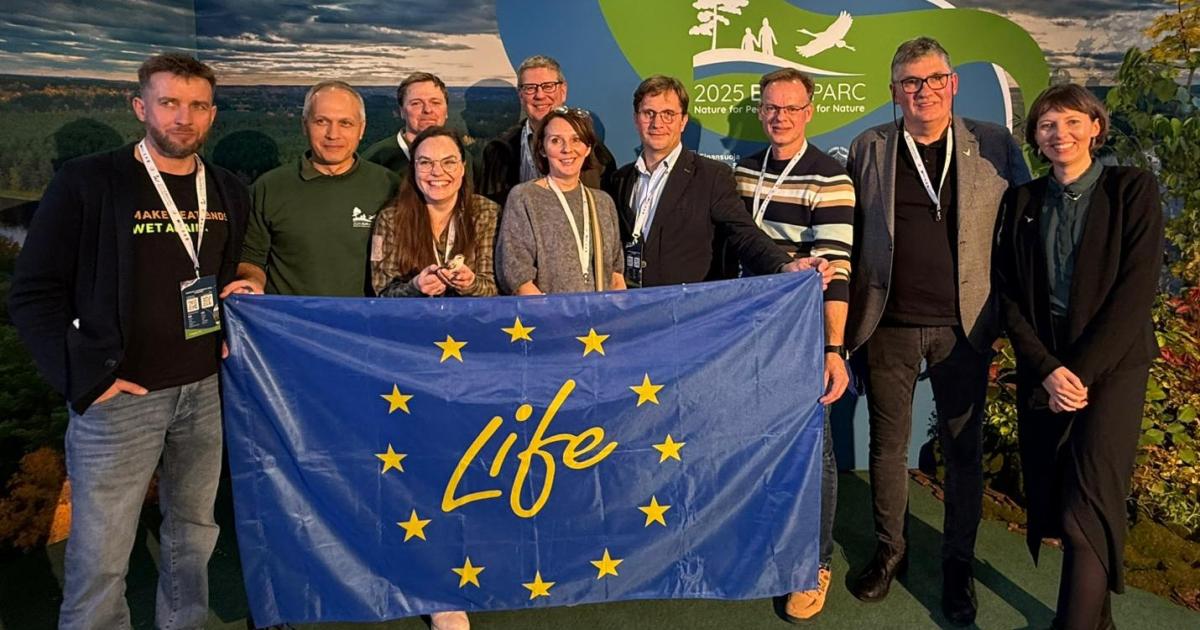LIFE projects from across the Baltic region featured at EUROPARC 2025, held at the Birštonas Cultural Center set within the stunning Nemunas River Loops Regional Park, one of Lithuania’s most extraordinary protected natural areas and home to 13 Natura 2000 sites.
With the EU Nature Restoration Regulation well into its second year — and 2025 marking the 50th anniversary of the Ramsar Convention — the conference focused firmly on the need to restore and safeguard nature for the well-being of both people and the planet. Since the LIFE Programme started 33 years ago, it has helped protect and restore biodiversity on more than 5 400 Natura 2000 sites — around 20% of the entire Natura 2000 network.
‘Well-targeted habitat management, based on scientific data and cross-sectoral cooperation, can significantly improve species conservation status and contribute to the European Union’s biodiversity restoration goals,’ notes Justina Karlonienė, coordinator of LIFETerns — one of 8 LIFE projects participating in the conference.
The impact of the 8 LIFE projects taking part go well beyond the Baltic. LIFE LWfG CLIMATE, for example, aims to boost numbers of the lesser white-fronted goose (LWfG) — one of the most threatened species in the world — in Finland, Estonia, Lithuania, Germany, Hungary and Greece.
LIFE OSMO BALTIC hosted one of 10 field trips to one of its project sites in Kaunas where it is restoring oak, lime and maple forests to create a green corridor to connect Natura 2000 sites from the south of Lithuania to the north of Latvia. This in turn will help endangered hermit beetles — which depend on dead and decaying timber for food and shelter — to thrive and spread.
LIFE projects from further afield were also represented: in his presentation Working together for Nature, Dr Derek McLoughlin, project manager of Ireland’s Natura 2000 award-winner LIFE Wild Atlantic Nature, focused on the need to collaborate and to integrate national and European policies. The project’s results-based payment scheme has created demand among farmers and landowners and ensured agricultural and ecological outcomes are aligned.
Other LIFE projects taking part included LIFE ForEst&FarmLand, a community based initiative to restore forest and faming landscapes in Estonia; LIFEMagniDucatusAcrola and LIFE4Aquatic Warbler — 2 projects aiming to save Europe’s most threatened songbird, the aquatic warbler; LIFEfarms for Birds, which is restoring degraded farmland at 4 sites across Lithuania; and LIFE PAF-NATURALIT, which aims to improve the overall system of Natura 2000 network management in Lithuania.
The LIFE projects participating in EUROPARC 2025 — and hundreds of others across Europe — restore and protect Europe’s precious habitats and wildlife. They support the EU Birds and Habitats Directives, the 2030 biodiversity strategy, the 2050 Climate Strategy, the European Green Deal and the Nature Restoration Regulation.

